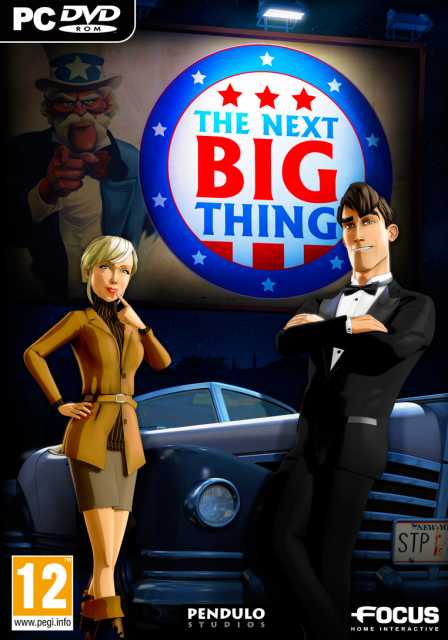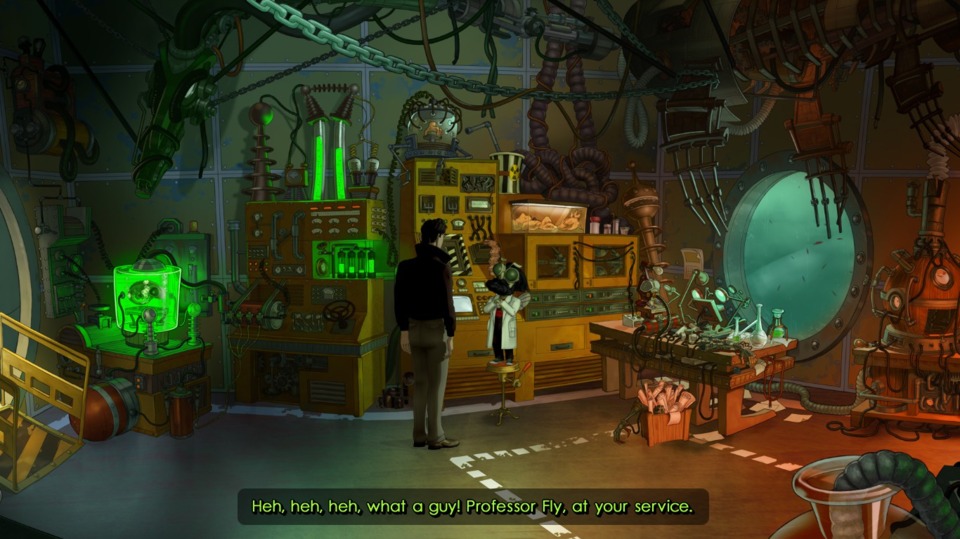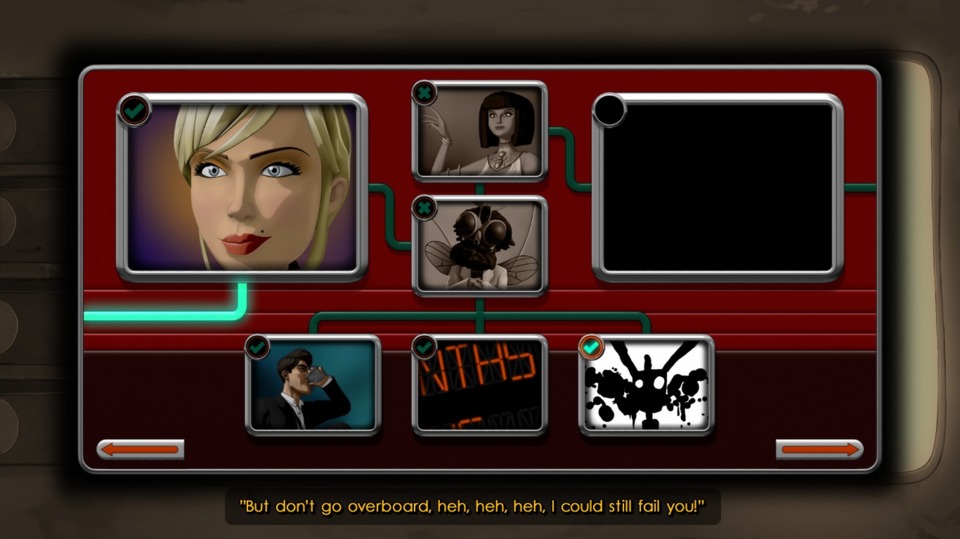Mento's May Mastery '16: Day Twenty-Six: The Next Big Thing
By Mento 4 Comments
The Next Big Thing

The Next Big Thing is the first Pendulo Studios game I've finally gotten around to... which feels sorta criminal for an avowed adventure game fan like myself, as Pendulo was of those few mainland European studios keeping the genre on life support before its semi-recent minor resurgence in the Indie market due to the likes of Telltale Games, King Art Games and Wadjet Eye. I also own Pendulo's most recent game, 2012's Yesterday, as well as all three of their Runaway trilogy, but those might have to wait another year for their turn. While I've heard mixed things from my fellow esteemed mod and graphic adventure nut @sparky_buzzsaw about a few of Pendulo's games, I've also been told I'm missing out with the others. So that leads us to The Next Big Thing.
You might recognize this game from an ancient Quick Look - @vinny is, of course, another major graphic adventure game enthusiast around these parts - where people said "disconcerting" a lot in response to the motormouth heroine Elizabeth Allaire and the unusual statements she made. She and her less enthusiastic colleague Dan Murray switch protagonist duties as the game continues, and The Next Big Thing features an unusual progression tracker that displays each of the centerpiece events as part of a series of puzzles that the player must solve, in something resembling a flow chart. Which might mean having to complete a set of objectives before you'll have what you need to complete the big puzzle and move onto the next part of the game. It actually works quite well, and while the game is careful to never tip its hand about puzzle solutions - higher difficulty modes turn off hints and the all-hotspot reveal features, if you consider those cheating - having a simple display like this is a big help whenever you're lost for what to do next. Despite the fact I got stymied a few times, the game has some very reasonable adventure game puzzles and it never drops more than a handful of locations on you to visit at any given time. If anything, the average number of available hotspots to interact with is usually on the sparse side. I also greatly appreciated how playable characters would dematerialize and rematerialize whenever you clicked twice on a location, greatly expediting movement. Really, at this point that and the "reveal hotspots" button are all I ask from a modern graphic adventure. Never downplay player convenience in your game.

Then you have what I would probably promote front and center were I on the marketing team for the game: its surreal sense of humor. This, I feel, is where The Next Big Thing comes closest to emulating a classic LucasArts game. While the vaguely selfish and apathetic sports writer Murray is a fun anti-hero, so often does he rely on a blunt weapon to solve most of his problems, it's Allaire - the neurotic middle-sister of a family of wealthy virtuosos - that has the game's share of great lines and utter lunacy. She'll panic about crocodiles as often as Guybrush does for porcelain, inexplicably compares everything - especially inanimate objects - to her babysitter Stacy, repeats the numbers twenty-twelve-one-four to calm herself down with no context given (the game is set in an alternate version of the 1950s, so it's nothing to do with dates), and will frequently repeat the words people are saying as they're saying them, as if she knows ahead of time what they're about to say. There's even an extended sequence inside her own mind that... reveals very little about how she is the way she is. Obviously, your mileage may vary on such an unhinged character, but I enjoyed her askew perspective quite a bit. It even seeps into the UI - objects will frequently change their names to reflect Liz's opinions on them, including a frozen corpse that suddenly got an entire name (with title!) when Liz was worried that someone might introduce them.

The game's surreal sense of humor doesn't begin and end with Liz Allaire, however. The vast majority of the game's characters are monsters - traditional movie monsters, that is, which the game reimagines as being hard-luck actors in the same way that the toons of Who Framed Roger Rabbit? were not so much creations of a movie studio but a group of unusual people who could only make it in the movies with the way they looked. Like Roger Rabbit, the game is set in post-war America and so most of these creatures are Universal Monsters as well as more direct homages like the zombie/vampire duo of Plan 9 From Outer Space and at least one scientist Brundlefly (the original adaptation of the George Langelaan short story was a 1958 movie - Pendulo did their homework). Most of these side characters add little, but end up being factored into puzzles in some form or another. The game does get cute with its catchphrases too - the earlier "disconcerting" as a stock response to Liz's frequent non-sequiturs, but also Dan's sarcastic "fascinating" and how frequently he'd "bet half his salary" on some foregone outcome. I want to say that was a deliberate homage to 1950s romantic comedies with frequently quipping leads - I got the same vibe from those dialogue touches that I did from the Coens' The Hudsucker Proxy.

As per usual, here's the May Mastery killjoy disclaimer corner: the game has some rough edges, especially in terms of unexpected crashes, some weirdly flat animation for the characters and that a few of the more "Laytonesque" puzzles that the game throws at the player will hit with a dull thud. One in particular where you have to conduct an orchestra of colored flowers requires an irksome level of precision that, when added to the fact that you don't yet know what the trick to the puzzle is, made it almost impossible to solve without looking up a solution to make sure you had the right idea but lousy execution (or vice versa). Even the less timing-based ones were a tad on the obtuse side, though I managed to figure those out in the end without help so I guess I can chalk them up to classic adventure game puzzle logic. There's also the minor nuisance that the game doesn't save automatically at any point, which is fun when combined with the aforementioned crashes. Oddly, I couldn't find a way to save over existing save files, so now I have a couple dozen of the things sitting on my HDD somewhere. Well, I can't imagine I'll ever be that desperate to clear some room.

Overall, though, I enjoyed my time with The Next Big Thing immensely. I perhaps didn't do it any favors playing it in the same month as a The Book of Unwritten Tales game (the worse one, but still) and Dreamfall Chapters, which are both a lot more competent and ambitious, but it's definitely a worthy adventure game with an endearing premise and some clever writing that didn't get mangled too badly in the translation from its original Spanish. I don't think I ever got used to everyone saying "Ayo!" to each other to end a conversation though, since I'm not sure that particular expression is even used en Español. Still, if the localization was off in spots, the general surreal edge to the game's dialogue covered it up well.
The Verdict: While brisk - even if you're getting stuck on puzzles as frequently as I was - The Next Big Thing is still a solid example of a modern adventure game, especially if you prefer them a little off-kilter and silly. More so than ever before, I look forward to playing Pendulo's other games at some point. Four Stars.
